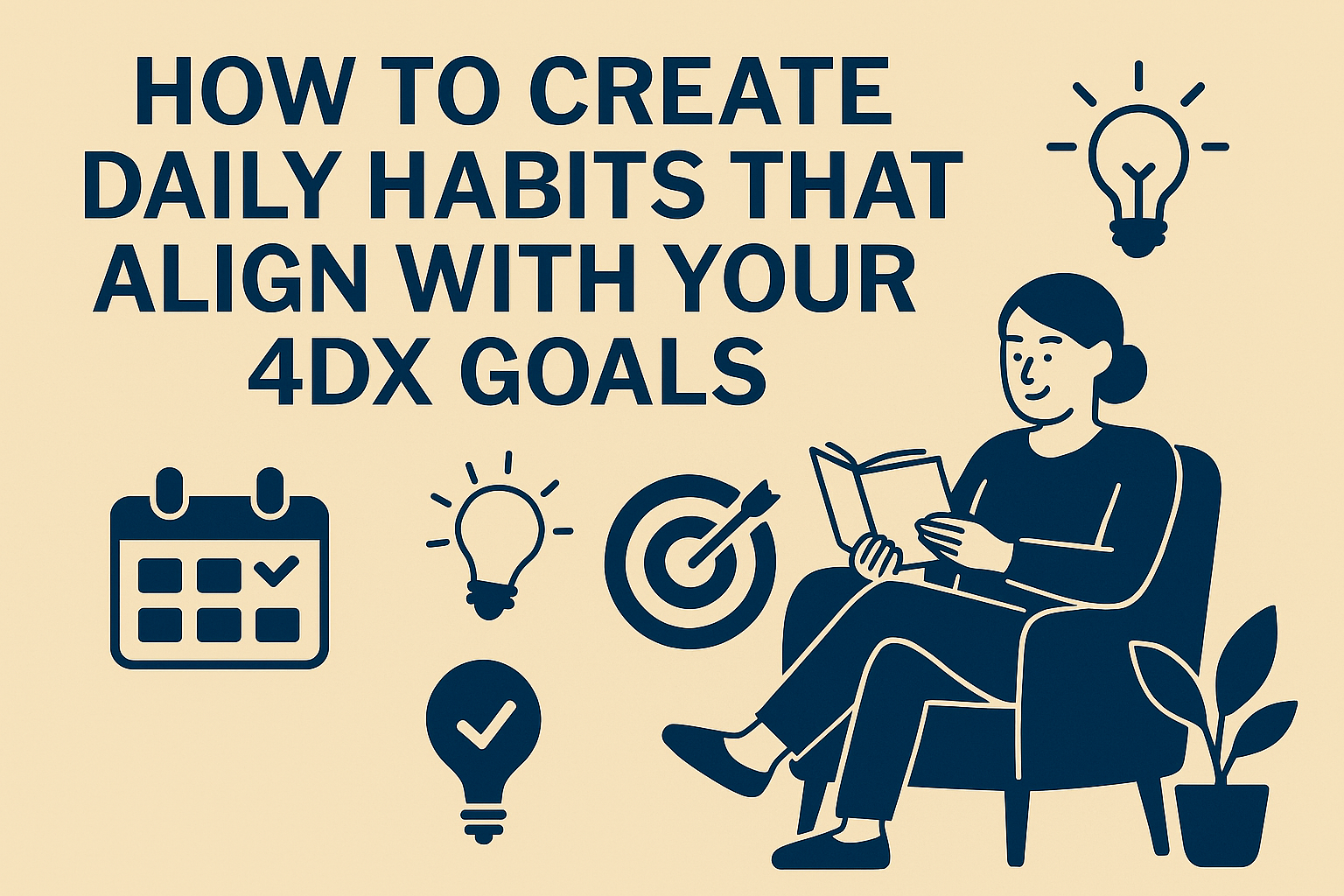Setting a Wildly Important Goal (WIG) is a great first step. But without daily habits to support that goal, execution fades and progress stalls. The 4 Disciplines of Execution (4DX) offers a strategic system—but habits are the engine that keeps it moving forward, day after day.
In this article, you’ll learn how to design powerful daily habits that align with your 4DX plan—turning ambition into reliable, measurable progress.
Why Habits Matter in Execution
Goals set direction. Habits create consistency.
Even the best strategies fail if they aren’t tied to daily behavior. Habits reduce friction, automate focus, and turn effort into momentum.
By aligning habits with your lead measures, you ensure that every day becomes a step toward your WIG.
Step 1: Clarify Your WIG and Lead Measures
Before you build habits, your Wildly Important Goal and lead measures must be clear.
Example:
- WIG: “Lose 5kg by August 30”
- Lead Measures: Exercise 4x/week and track calories daily
These lead measures become the foundation for your new habits.
Step 2: Break Lead Measures Into Micro Habits
Turn each lead measure into a repeatable daily behavior. Make it small enough that it’s easy to start.
Examples:
- “Walk for 15 minutes after lunch”
- “Log every meal in MyFitnessPal”
- “Write 300 words before checking email”
If it feels too big, you’ll resist. If it feels easy, you’ll do it without thinking.
Step 3: Stack Habits Into Your Existing Routine
The best way to build new habits is to attach them to existing ones.
Formula: After [current habit], I will [new habit]
Examples:
- After brushing my teeth, I will write in my habit tracker
- After my morning coffee, I will review my lead measure checklist
- After my team stand-up, I will update the scoreboard
This creates a trigger-and-response pattern that locks in consistency.
Step 4: Track Habits With a Simple System
Use a visual tracker to reinforce your daily behaviors.
Tools to use:
- Paper habit tracker (bullet journal style)
- Habit apps like Streaks, Habitica, or Loop
- Spreadsheet or calendar with daily checkmarks
Tip: Don’t aim for perfection—aim for consistency. Missing one day is okay. Missing two is a risk.
Step 5: Connect Habits to Your Scoreboard
Your scoreboard shouldn’t just track lead measures—it should also reflect your habit consistency.
How to do it:
- Use checkboxes for each daily habit
- Include weekly habit completion % on your lead measure summary
- Celebrate when you hit habit streaks (e.g., 7 days straight = mini reward)
When habits are tied to your WIG visually, they feel more meaningful.
Step 6: Review and Adjust Weekly
Use your weekly 4DX accountability session to reflect on your habits.
Ask:
- Which habits helped move my WIG forward?
- Which ones did I struggle with?
- What habit will I focus on next week?
You don’t have to build 5 habits at once. Build one or two at a time, and layer in more over weeks.
Real-Life Example: Daily Habits for Writing a Book
WIG: Write and publish a 60,000-word book in 90 days
Lead Measures: Write 500 words daily, review outline weekly
Daily habits:
- 7:30 a.m. – Open writing app before anything else
- 8:15 a.m. – Update daily word count in tracker
- Evening – Review outline for next day
Tracking system: Paper calendar with colored checkmarks for each writing session
Result: Clear structure, visible momentum, sustainable focus.
Final Thought: Build Habits That Support Execution
Big goals are exciting—but daily habits deliver them. By aligning your habits with your lead measures and WIG, you create a system that works even on days when motivation is low.
Start today by choosing one habit tied to your lead measure. Make it small, schedule it, and track it. With time, your daily actions will carry you to extraordinary results.
